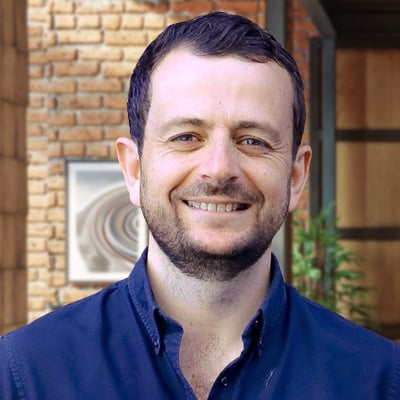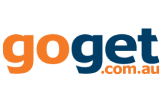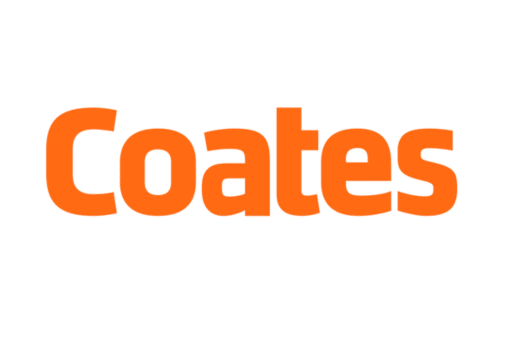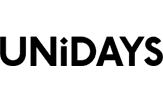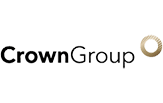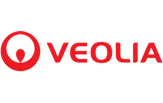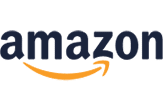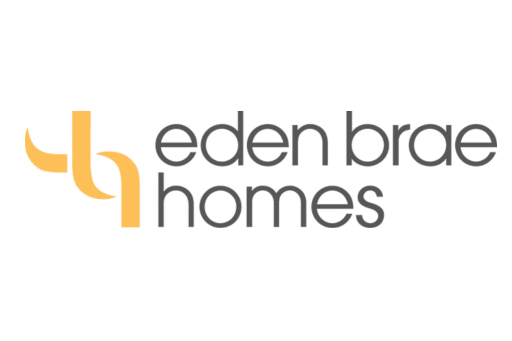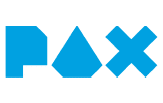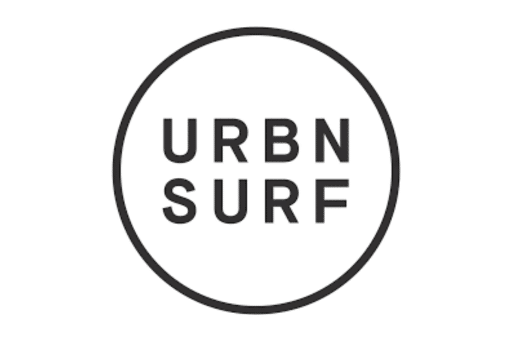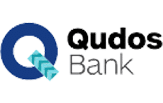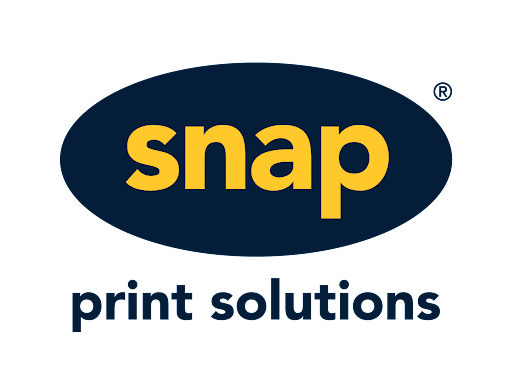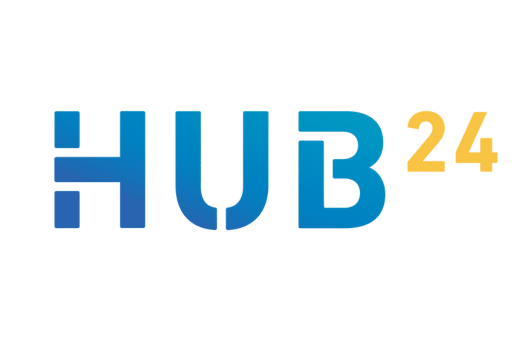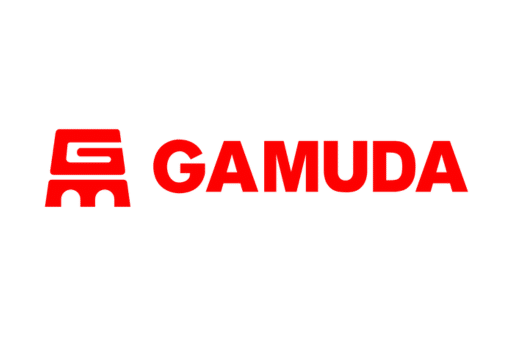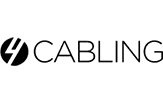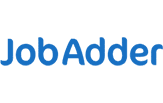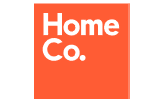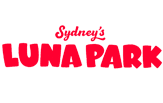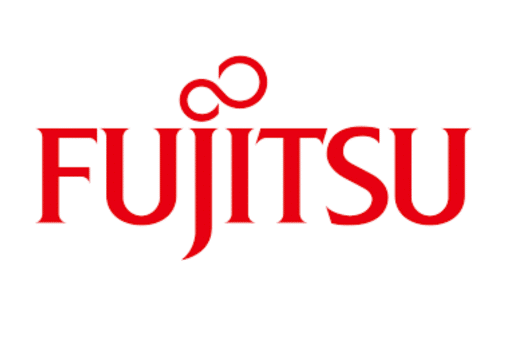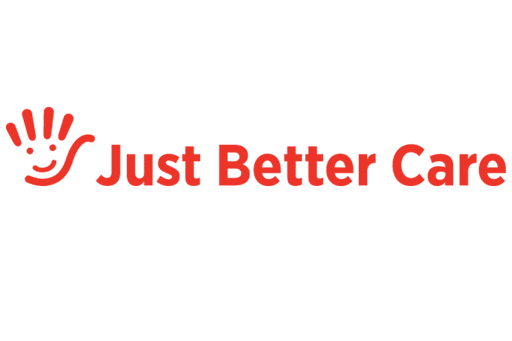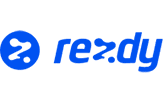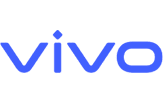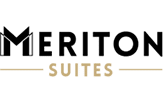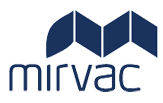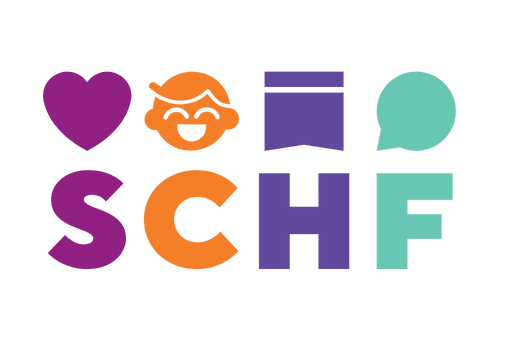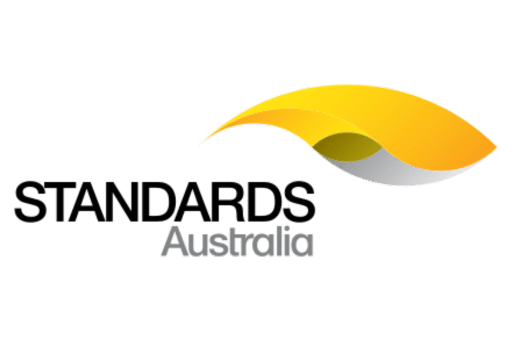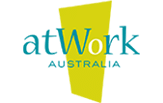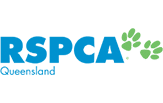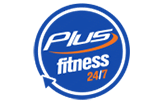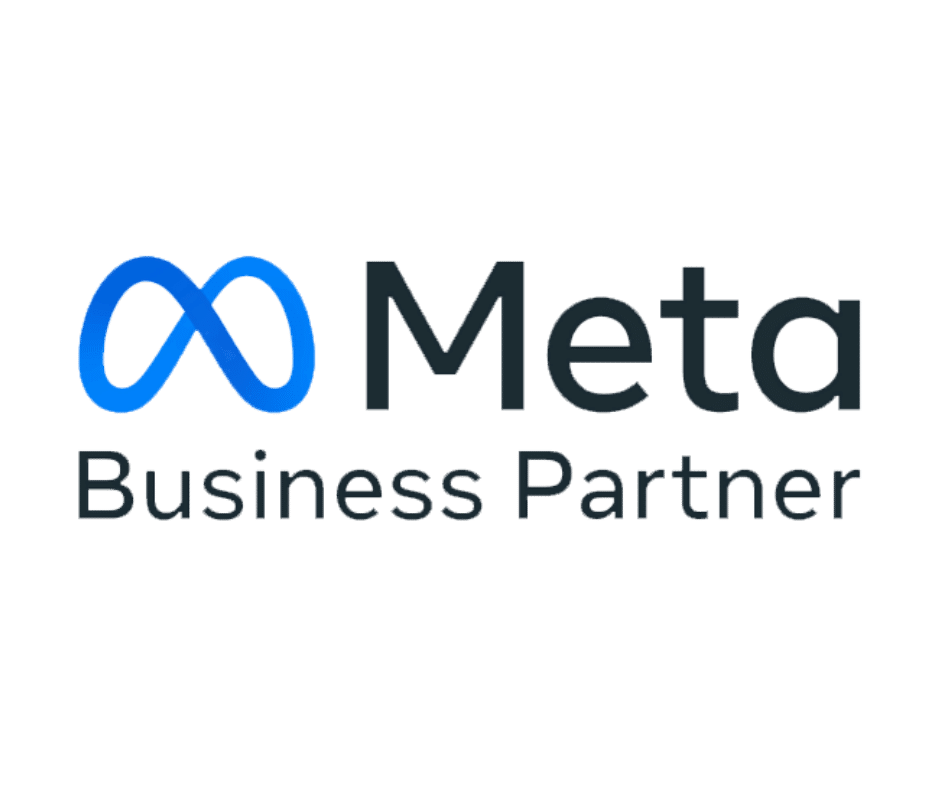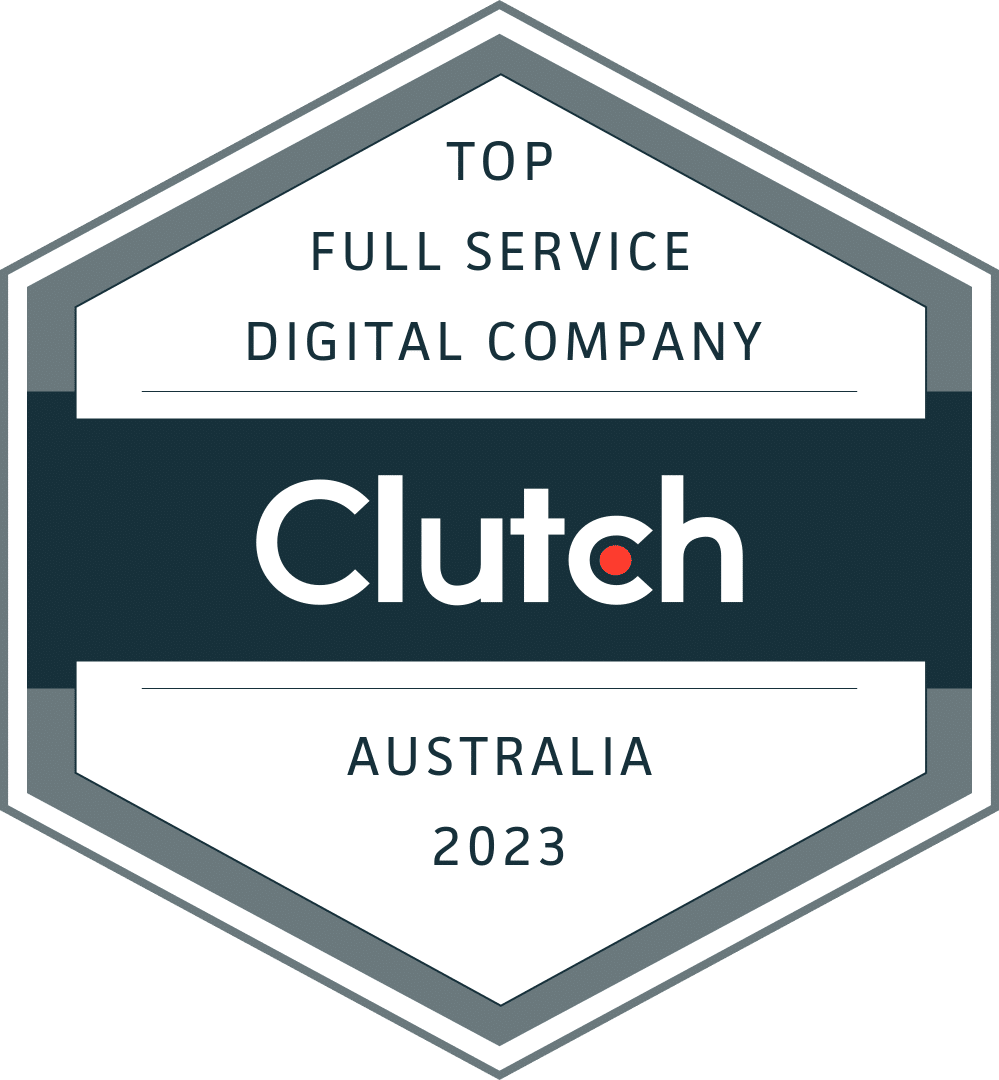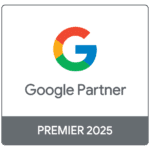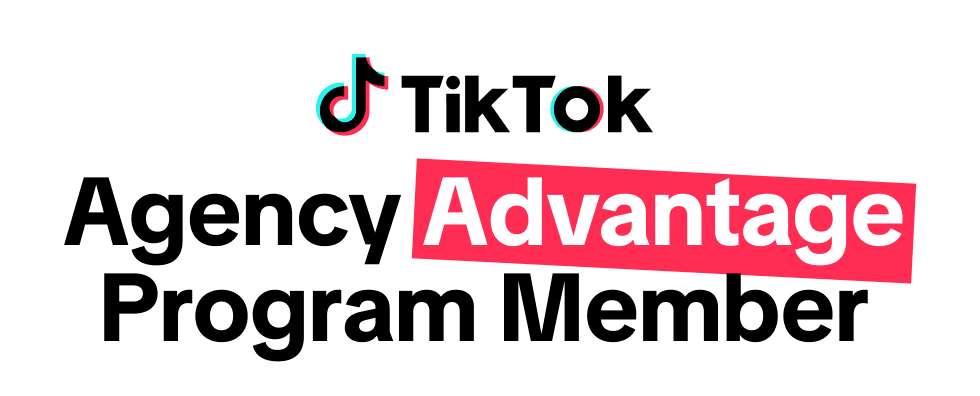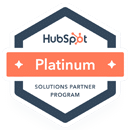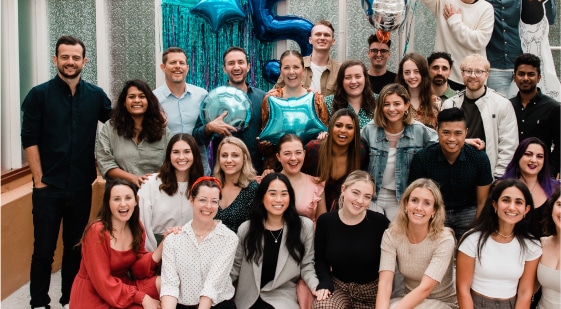How to Start a Podcast
Episode Description:
Need help starting a podcast? This episode details the best way to coordinate guests, where you should stream for listeners, the process of setting up an episode and how to measure success. Kayley Melham, producer of the Smarter Marketer podcast gives a detailed guide on all you need to know about setting up a podcast.
Key Takeaways:
- Why should you start a podcast?
- How do you measure podcast success?
- What are the differences between Captivate, Buzzsprout and Anchor as hosting platforms?
- What is the best equipment to record a podcast?
- What are good podcast resources to have (tracking sheet, episode description, email templates)?
- What is the best way to promote your podcast?
- How much time/effort goes into each episode?
- What is the best day to release a new podcast episodes.
Featuring:
About the Guest:
Kayley is the Marketing Coordinator at Rocket Agency, and works with the team to deliver insightful and informative copy, organise their webinar events, and manage the company’s organic social channels. She also produces the Smarter Marketer Podcast. Follow her on LinkedIn.
Transcript
James Lawrence: I am joined this morning by Kayley Melham. Kayley, welcome back to the Pod.
Kayley Melham: Thanks for having me again.
James Lawrence: We were just laughing that it's like breaking the fourth wall. We have the person responsible for the pod now on the pod.
Kayley Melham: Yeah, yeah. Very surreal.
James Lawrence: It's a bit mind-blowing. Kayley is the resident smart marketer, in-house marketer. She's been the producer of the podcast since we started. She was key in formulating it, why we should do it, and how we can do it. And then you've cajoled me. Dealt with me being late and missing deadlines, and you basically helped set up the pod and edit it every fortnight. So you've been on the pod before, but we thought it'd be an interesting topic to delve into the how and the why of setting up a podcast. I think most of our listeners are in-house marketers or marketers where maybe they're thinking of doing it personally to build their own brand and thought leadership, or they might work for an organisation where creating a podcast could be a really viable kind of play for them. So we have some stats here, which I think are really interesting. Do you want to kind of walk through the why of starting a podcast?
Kayley Melham: Yeah, definitely. So I think the big one, and this had pretty big coverage when it happened, but for the first time ever, Australia has overtaken the US in terms of the number of people that listen to podcasts. So it's gone up from 40% of people listening in 2022 to 43% in 2023, and then approximately one in every ten Australians above the age of 12 listen to a podcast every day, which is amazing.
James Lawrence: Isn't it pretty insane? It's kind of become the quasi-radio of 20 years ago, but you get to listen to whatever you want to, when you want to listen to it. The stats in that study were 59% of Australians listening to pods in cars, 51% whilst walking or jogging, 39% on the bus or public transport while working. It's kind of just become this behemoth, hasn't it, in terms of our insatiable consumption of podcast content?
Kayley Melham: Yeah. And you learn while you do, which I think is a pretty good thing. You clean and you learn, you walk and you learn. Multitasking.
James Lawrence: For us, it also has that intimacy where when you listen to a podcast consistently, you start to almost have this relationship with the host or the guests and definitely on our pod, I think that's what we've heard, is that people almost feel like they kind of know us now based on listening in every fortnight, which is kind of cool. The first starting point is the why or should you do it?
Kayley Melham: And I think you really pushed the pod. And we knew that it was going to be a long-term investment, not a short-term one. But why were you so keen and what do you think that the reason businesses should try and get it started?
James Lawrence: I definitely don't think all businesses should. I think that would be my first caveat. I think you've got to have a really deep discussion and consideration and decide whether it is a good thing to do. You've got a podcast. Everyone's got a podcast for a couple of years. We've always tried to create good content as an agency. I feel that the Australian marketing community is underserved with quality content. For Australia, we look to America and and the UK to find really good quality content that helps us better and smarter and all those types of things. As an agency, we've always tried really hard. Back in the day, it was actual seminars in the office. We've kind of created guides that I felt were high quality. Basically trying to get people to exchange an email address for a good-looking PDF cover that then had no guts behind it.
James Lawrence: Follow the market and the stats don't lie, right? Lots and lots of people are listening to podcasts and that means marketers are listening to podcasts. I wanted to do it for a few years, but I was very concerned that we would launch it and then wouldn't have the follow-through. I was worried that it'd be technically difficult to set up. We can talk about it later. I was concerned about my ability to host the pod and do it well. I'm not a journo. I'm not someone who's experienced with that. For me, it was very much around wanting to do it. We're all busy. Do we have time to actually do it? But if we are going to do it, to commit to it, when we were talking about it beforehand, it was very much, we're going to do this and we're going to give it at least a year and we're not going to judge anything. The data is coming in, but we're not going to write this off until we've done it for at least a year and done it at a good level.
Kayley Melham: I definitely agree. And I think that that's probably one of the main questions that lots of people ask; what's the point of me actually trying to do it and what am I going to get from it? And so I think one of the main things is the quality content. And it's if you actually need practical takeaways, if you want to learn something, I'm going to give you everything that you need to learn. And I think the second thing is you do become a sort of authority or leading figure within that niche within that industry, and people can kind of create, like you said, that relationship with the host or with the podcast itself.
James Lawrence: Yeah, that's it. For me, it's just content marketing. Before deciding to go off and put together white papers or to hold a conference or whatever it might be. I think you've you've got to look at the market. And who are you trying to reach with a particular piece of content? What are their pain points? What are they struggling with? What keeps them up at night? If you haven't got enough content, that's going to be actually interesting to that market or you don't know who the market is. This pod is to help get great content out there, but also by association, I want people to think that I'm a decent marketer and that if you've got a challenge that you need help with, that you might consider speaking to Rocket. So, you know, it obviously has a commercial element to it.
James Lawrence: But I think if you come at it from a money as the main driver, you're going to struggle. It is classic content marketing, right? You've got to give away really valuable insights, things that make your market better and smarter and feel valued. And then you put your brand behind it. That’s the ‘should you actually do it?’ type question where yeah, the world has tens of thousands, hundreds of thousands of podcasts that kind of get spun up. I can imagine how many launch and by the sixth episode or the eighth episode kind of stops happening. If you've really got to commit to it, when we started, we were trying to do a weekly episode, which we found really hard to not necessarily hard to record, but hard to actually create great content, which I was proud of the fact that we took a step back because our numbers were growing quite well, and we took a step back and said, we're actually struggling to find guests or topics, themes that we think are going to be really useful. So we bumped it back to fortnightly when our episode. We're in the 50s now, so how far away we're probably…
Kayley Melham: Oh I think yeah, this is episode is in the 50’s.
James Lawrence: Yeah. 18 months in or something like that probably.
Kayley Melham: Yeah, 18 months.
James Lawrence: So we said we weren't going to judge it for a year. It didn't matter what happened. We were going to commit to it. Block the time out in our calendars, give you a certain amount of time of your weekly schedule. Hopefully when you listen to the rest of the pod, you'll kind of get more of an idea of what it takes to get an episode live. But unless you're willing, I think come into it with your eyes kind of wide open. Got a friend who recently launched a pod, and it was a very narrow topic that he was creating the pod on and kind of talking about it, and it made just so much sense to run it as one series. So rather than trying to run it as this kind of evergreen forever kind of podcast, he decided, no, I'm just going to create 6 to 8 episodes and that will be it. And who knows, maybe if it takes off and if there's kind of spin-offs down the line, we'll do that. But he came into it saying, I'm just going to do it in this particular way, which I think made a lot of sense for that particular topic.
Kayley Melham: You were talking quite a bit about, we'll do it for a year and we'll see how we go and we won't kind of measure or track or see the impact until after that year. How would you recommend or how do you know that it's doing well? What's the measure for success and how do you know to keep going or to just stop?
James Lawrence: It's a great question. Big time successful hosts of podcasts; your Rogan's, Bill Burr, who like a lot of the sporting ones, you have this almost overnight sensation, overnight success type thing. And if you actually listen to them in those examples, maybe it was a daily podcast and it was two years, three years, pumping content out there, slowly growing, slowly growing. And I think the other thing then is about what's the purpose? What am I trying to achieve here? So for us, it was about building a podcast community where Australian marketers are wanting to listen to the content that we are creating, they think of the pod as being a place where they can get excellent information to help them better at their career. We wanted to bolster my personal brand and the Rocket brand, to help get Rocket in front of more people. We At the very beginning, we wanted hundreds of listeners and unique listeners per month after a certain point, and we were hoping that there'd be some kind of commercial discussions taking place as a result of the pod, but we were definitely willing to give it a year before we said, no, this doesn't have legs or yeah, we should be doing more. I think starting reverse engineering with your purpose. If you're thinking of creating a pod because you love rugby league or if you love movies, then you know what? What does success look like? Is it a thousand downloads a month by the 12-month mark, or a certain number of people subscribing to something at a certain point? Be expecting a massive lead time; you're not going to pump out a few pods and then suddenly you've got tens of thousands of listeners in month three.
Kayley Melham: And I think I used to get pretty frustrated when I was first trying to research. All I wanted to know was; what the average number of downloads or listens were, so that I could compare us against it. And it was quite annoying because every article would say it doesn't matter what other people are getting. Focus on your own lane. The grass is always greener. And I was like, no, give me something to compare against what they were saying. And I know now how true it is, that you could be having a podcast with 300 people that listen regularly, that love it, that engage with you, and they're quality people, and that's a really strong relationship compared to a thousand people that listen but aren't really that engaged and whatnot. So it is kind of the quality over quantity kind of thing.
James Lawrence: 100%. And I think that is the whole should I do it? And if I am going to do it, who am I trying to target and what does success look like? Let's pretend that I'm a marketer and the I'm a consultant and all I do is market consulting to law firms around Australia. Then if I can get 150 senior marketers or partners of law firms listening to my pod every month, then that's an amazing outcome, right? And we've got guests that are just in that community and talking about the pros and the cons and the changes in the landscape, and it's so niche but rich and great. But if you are trying to reach a big B2C segment on something that is wider, that 150 people is not going to scratch the surface. It's just marketing, right? It's just content. What's appropriate, what's right? You want to continually measure your numbers and make sure that people aren't dropping off and people are finding your content valuable. But how long's a piece of string?
Kayley Melham: Exactly. I think it'll be good now to kind of jump into; you want to do it, but where do you start? The stuff that you have to know and set up in order to get it running?
James Lawrence: Well, given that you've done absolutely everything and I spend about 40 minutes every fortnight asking questions, I'm just going to defer to you. I'm going to take the lead here and do what I normally do and just ask questions. Where do you start? What's maybe the style like because there are different ways of doing a pod? What are the different options?
Kayley Melham: I feel like it is helpful to refer to when we did it for a practical example. So you really, knew that you wanted to call it Smarter Marketer. You had the book, so you were set on the name - the name is quite important. If you don't have one yet, your tagline or your description or your bio is really important because it's telling people; this is what you do and this is what you want them to get out of it. So ours was always; ‘the definitive podcast for Australian marketers’. That's the audience that we wanted to reach. And this was the message that we definitely wanted to get across. So I think focusing on those two things first is really important.
James Lawrence: Yeah. That's great.
Kayley Melham: Like you said, going into the style obviously depends on whether you have one host or two hosts or three hosts, whether it's someone just talking and sharing information with people, having a discussion about certain topics or more so doing what we are, and having that hosting/guest with the interview style. Plenty of people have a mix. Some people just get guests on for a quick 10 minutes or 5 minute interview, and it's primarily two people chatting, so it definitely depends, I think, on who you have as a resource that can run the podcast itself, and the type of guests that you think you can bring on to add value.
James Lawrence: That's good. And we're still experimenting with that. When I started it I was very much; we're going to every second episode just interview a marketer. Their career trajectory, what are they up to, what's working, what's not working? And then every other episode we would interview a subject matter expert on something. And it's been quite interesting. The most listened pods that we've done have been in-house ones where it's been yourself and myself chatting about a topic, or you interviewing me on the most asked questions or digital trends for the year to come. And we'll talk about the actual the interviewing style. And I've found that I get the most out of often guests that I know. We'll get repeat guests coming back. And I often find that knowing them, knowing how to steer them in a conversation where I know they've got rich insights, I often find that we get good content coming out.
James Lawrence: And often when interviewing someone that I haven't met, or they might even be higher profile, the content might not be received as well, because a lot of the pods that I listen to, particularly business ones or actually like sport and stuff, it'll just be two people that are really familiar with each other, both just going back and forth on a topic. I listen to one on how to run an agency called The Two Bobs, and it's just two consultants in agency land, and they just go back and forth on topics, and often one would lead it and one will play a contrarian role. And I just get so much out of that. My favorite sporting pod is the same. I think there's lots of different ways of doing it. Even us having this one, it's kind of it is more of a conversation for listeners out there. We're going to probably do more of this style moving forward. Not to say we don't want to bring guests in on certain topics, but there's no one right way.
Kayley Melham: And you can mix it up. There's some that are very particular in terms of their structure and the type of people that they have on, or the style of the interview, or just the style of the podcast in general. And then there's others that are just super flexible, and it allows them to have a little bit of fun and play around with different styles.
James Lawrence: And a lot of that was getting feedback. We speak to people that listen to the pod and we look at the numbers and look at which ones seem to get better traction. You look at Mr. Beast on YouTube and whatever else, his interview on Rogan. He's fascinating just in terms of how to get content out online. As a kid, you know, teenage kid in his bedroom, he's just there obsessing over looking at what titles work and what content works and when to bring things in. And the whole thing is just this iterative, and you start to get a bit of a feel as to what will work and what won't, I guess more practically. So if you talk about style, that makes a lot of sense. Just equipment. What sort of equipment, how do you record it? What hosting platforms? What is a hosting platform? Maybe if you could talk about that just quickly.
Kayley Melham: One of the things and we kind of ummed and ahhed about for a bit was audio versus video, and one or the other or do both. I think audio is definitely a must. You want to get on Spotify, on Apple Podcasts, on Amazon Podcasts and whatnot, but do you want to have that visual element on YouTube. In terms of equipment, the quality of the discussion, obviously super important; people aren't going to listen if it's not good content, it's just not worth their time. Now there's so much content out there, they're going to pick what is good, but the quality of the audio has to be good for them to listen. If it's super echoey, if it's mumbled, if there's the aircon in the background, it can be super distracting and it could be the best content in the world, but people are going to sit there and kind of scratch their ears because they don't want to listen. So there is some good stuff on the market, obviously higher end. You've got your Rode. They have all of the really good audio equipment. It's what they're known for. But there are some other players. If you go on Amazon, there will be some other equipment that is decent. I would just say look at reviews. Reviews are really good at telling you whether the quality of the products are great or if they're not.
James Lawrence: That's it. I think for us, yeah, the audio was non-negotiable. Our video is not great. I kind of do it here in the home office. And we haven't got an ideal space in the office to do it. We've kicked that down the road a little bit. We'll probably look at how we can lift the production value of video in the future, but at this point leading on audio. We're throwing some of the episodes up onto YouTube and you do get really interesting reach. Just a gut feel type thing, but I do feel that the numbers on Spotify and Apple podcasts, you know, they're all locked in Australia, feels quite like we've got a really good audience there. And I'm not convinced that the impressions in YouTube are necessarily Australian marketers streaming on YouTube as much as just kind of incidental views around the world.
Kayley Melham: I think the other thing to keep in mind is just where you actually decide to do it is going to have a big impact. So something that I always say to guests when they're going to hop on, don't do it in a room with lots of tiles or with lots of windows, because the audio's just going to bounce off all of those surfaces. You want to record in a room that has carpet or blankets or cloth materials that are going to soak up all of the sound. Don't play with zippers. Don't wear lots of bangles, don't have the aircon on, don't have the washing machine on, like all of that kind of stuff. It's super simple, but you don't think about it when you go to sit down and record the episode.
James Lawrence: Kayley’s always asking me to stop drinking water bottles and clinking, and I get I get in trouble for that. I think on these types of things, if you're actually going to do it, then you're going to go off and do a lot of this research. Just quickly on hosting platforms; what is a hosting platform and just very quickly kind of good ones, bad ones?
Kayley Melham: Yeah. So what happens is when you record or set up your podcast, you have your RSS feed, which is pretty much like your base camp, I like to think of it. So your hosting platform, that is where you upload all of your episodes into, and then it distributes it to Spotify, to Apple, to Amazon and what have you. So you're hosting platform is pretty important because you want to make sure, number one, the analytics are good so that you can measure your attribution. You can see where people are listening. Do you know you know your downloads every day and your listens every day? But hosting platforms have obviously gotten quite clever recently, and they have features such as media kits. If you want to make money, they have links to websites. So if you want to link your podcast to a website that you've built. I think the one question that I always had and I couldn't get a definitive answer was which hosting platform is the best? Because there is so many of them out there.
Kayley Melham: The three main ones that pop up everywhere, that I really wanted someone to tell me what the difference was between them was Anchor, Captivate and Buzzsprout. Anchor, I’m pretty sure, is directly affiliated with Spotify. It's free, so if you don't want to have to pay any money setting it up. You can start it on Anchor and it's a free platform. You don't have to pay for the RSS feed. You don't have to pay for the analytics. It's all there for you. However, because it's free, the analytics and the features are often limited, so you might not get as much variety or detail or opportunities as you would with other platforms. Captivate is what we use. It works really well for us, so it's minimum $17USD a month for 30,000 downloads a month. Most new podcasts aren't going to reach up to 30,000 downloads per month. Their features are quite good, so it has a built in calendar, so you can schedule interview times with guests through the platform. Offers a media kit for you. Then the last one is Buzzsprout. I would say it's probably the most popular one. If you look it up, it's going to be one of the top ones on search. It starts at $12 a month, but for a maximum three hours of downloads. So if you're doing four episodes a month and they're each 50 minutes long, you're going to have to go up to the next tier. So it's kind of the length of your episode.
James Lawrence: They’re all cheap, right? So I guess like they're all going to do a pretty decent job. There's no real difference, do you think, between the three fundamentally? And I think the listeners can go through and there's probably going to be certain settings or features that tip you one way. But if you go with one of those three, you're probably you're dealing with a legitimate provider. It makes sense. And then in terms of okay, we've recorded the episode sounds good. What kind of resourcing? What else are we having to do? We'll get to the promotion in the next area, like how do we promote the pod, but is there anything else we meaningfully need to do to kind of keep things ticking along?
Kayley Melham: I think the resources that have really helped us kind of stay on track and make it a really efficient process is firstly having a tracking sheet. So ours lists when the episodes are going to go live, episode name, description, who the guest is, what number it is? And it's also really helpful for us because we write blogs and transcripts and we have the YouTube videos. So it's a way to track, have we done it for each of those episodes? But that's pretty good. It lets us see what's in the pipeline, what we've published previously. The other one is having your episode description template, I would say. It's the same episode description for every single episode. Does it link back to your website? Does it have a call to action? Does it have a link to any resources mentioned in the episode? And then you'd obviously just change the guest's bio and the short episode description. The last one I would say that’s super helpful is having an email template. Pretty much every email that I would send out to a guest, I have a template sitting in a document that I can kind of just copy and paste and tweak if I need to. It saves so much time. It really does.
James Lawrence: It's basically telling guests, this is the zoom link, you've got a little attachment covering; don't dress like this or dress like that. Be ready, have the mic ready. These are just the do's and don'ts and I think we'd be happy to share that as well. If anyone wanted to hit us up, email me at jamesl@rocketagency.com.au. I'm happy to send across that template. Then how do you promote a podcast? I guess that's what's worked for us. For me, there's no point if your content's not great. You might get a couple of people listening to the first one and they're going to give it about three minutes and then they'll just unsubscribe. So I think you've just got to make sure the content is good. The first pod that we published was not the first pod we recorded. We did some tests and we did a couple with people I was really familiar with. Then we did some more, and then we picked the very best couple and front loaded them, because we just didn't want people to get something that was a bit rough. I think you want to get ahead of it, make sure you know what you're doing. Let's presume the content is good. How do we get it out there into our into our audience?
Kayley Melham: Aig one is through email marketing. I think that's really putting your pod in people's inboxes. And if you're a business and you've already got a really good database of contacts that you know are your target audience and do already receive coms from you, it's really great to just pop it in the inbox. Say; hey, we've started a podcast and I think you'll really enjoy the content, episodes are X long, here's the first one and I hope you enjoy. When new episodes come out, sending that email saying; here the episode, here's what we chatted about. You can listen on these platforms and link directly to the platforms for them.
James Lawrence: That’s great.
Kayley Melham: Second one is obviously super helpful. To have your podcast in a webpage directory is a really good sign. You have to pay for some, others are organic. But if someone's going to type, you know, for us, ‘best marketing podcast in Australia’ into Google, we want Smarter Marketer to be right up there. And then the other one I would say, and obviously helps if you are doing video and there is great video editing software out there, but your YouTube shorts, your Instagram reels, your TikTok. Splicing up 30s of really good content in an episode and promoting it organically or paid on social channels. That's going to get people listening. And if they see five videos and they enjoy every single one of them, chances are they're going to search for you and they're going to listen to you.
James Lawrence: That's right. We've done a lot of work on building out a section on the website, the Rocket website for the podcast. Each pod has its own page, it has a transcript, it has a tile, it has a summary. It's quite rich content for SEO which is good, I guess. We also piloted with a little call to action saying if you enjoy the pod would be great if you could share it with a friend or two that would also be interested. I think that's a nice kind of way of doing it, but we've played around with a bit of paid stuff, and probably hasn't really driven much. The reality is, if the content is good and you do nice organic marketing like we've talked about there, your audience will find it eventually, right? Focusing on the quality of the content rather than on how to market it…
Kayley Melham: I've heard some interesting ones. Like it obviously depends on your business model, but like I've had to call up HCF before and when they put you on hold, they say, by the way, we have a podcast, it's on this. And I was like, oh, that's actually a really interesting and a clever way to market it. I wouldn't have thought to do something like that. So obviously depends on the type of business you are, but there's some clever ways that you can kind of integrate it.
James Lawrence: Just using those owned channels, right? Is just a sensible starting point. We've got some rapid-fire questions here. So how much time would you say that you invest in setting up for each episode? If you presume you've got everything set up right, we had someone come out here to my house and help set the mic up and the RODE. Let's pretend you've got your style guide. You've already got the name of the pod and all those types of things. And you've done a couple of them. Not as much as I probably should, in honesty. It saves me every time you put together a nice little kind of cheat sheet of the episode. You put a bio in for the guest, you put some questions in. I reckon I would spend an hour before our pod, so not necessarily straight before it, but I'll get that cheat sheet. I'll then rework the bio because I just feel I need to have it my tone. I'll do some research on the person. Some of them I know well, some of them I don't. Then I'll do some research on the topic, Googling, read some white papers. I'll use ChatGPT and just kind of saying, hey, I'm doing a podcast on this topic. What are some questions I should ask if it's a topic I don't know heaps about? I might speak to a member of our team just to get a little bit kind of Rocket’s perspective on it, but I reckon probably an hour.
James Lawrence: Then each pod we have an hour blocked out for it. With that hour maybe it might be five, ten minutes chatting with the guest beforehand. Get it open there. Nervous. Try to get them a little bit less nervous. Sometimes you rip straight in. Sometimes you talk a little bit about the direction. But I find that it can be quite damaging because often some of the great stuff comes out beforehand. So try to not to talk about it too much. Generally we wouldn't run over that hour mark. I've had some that probably run ten minutes over. Then you edit it and it comes out at probably, you know, 30 to 50 minutes, and I spend a little bit of time chasing guests that you help me with as well. But if I've got the relationship or if they need me to more 1 to 1 reach out, then I'll kind of do that. So I guess from your perspective, how much time are you spending?
Kayley Melham: I feel like beforehand it's not that long because I think you do a lot of prep for the content of the episode. I'll jump on LinkedIn, find some of the places they’ve worked or things that they've done, and pop that in. I probably spend 20 minutes beforehand. It's the afterward for me because I edit the episodes and then set them up on the hosting platform and then do the transcripts and write the blog articles for it. That’s the heavy chunk. Maybe about five hours per episode?
James Lawrence: And that’s including getting it on the Rocket website? Is that the transcript as well as manipulating that?
Kayley Melham: Yeah.
James Lawrence: That's the thing. If you're going to do this, don't come into it thinking that it's 30 minutes every second week. We're spending probably a day of company time per episode, right?
Kayley Melham: Yeah. If the episode is 40 minutes in length from the original recording, I'm looking at over double that to edit it.
James Lawrence: Because of all the mistakes I make?
Kayley Melham: Well, it depends on how much you want to edit it, but I just take out the umms and the gaps and stuff like that, so it takes time.
James Lawrence: We've got some stats here, which I think are interesting. I would have said Apple Podcast was bigger than Spotify, but it's not. So Spotify 33%, Apple 21%. Google podcasts 15#. Audible 10%. In America, Spotify does have the lion's share there as well. Apple might have a more engaged audience. That was the article I was reading. I can't remember if it was downloads or listens, but people on Apple do listen a little bit more. But fundamentally, you need to get into those places when you're looking at how to maximise reach. Are there things you're trying to include in the episode description? The best day of the week to release an episode? Does length make any difference?
Kayley Melham: I think the episode description number one, you want your keywords in there when people are doing a Google search, so you want your episode to pop up, but you also want it to genuinely be saying to listeners, here's a problem you're facing. We're going to answer it in this episode. As it is with all marketing, here's your problem, we're going to offer you the solution. So how can you structure your episode description around that? Rhetorical questions are really good. I always like having those in there. And then like I mentioned earlier, link back to your website. Any resources you talk about you should link in the description. If you want to get leads and if you want to get people having a discussion with your brand, you do need those links in there so that they can find you quite easily. I think in terms of the best day of the week or time to post depends on your audience, but if they're going to be listening to it on their commute to work, you want to publish it early in the morning so that they can do that either on their way or on their way home. So we used to publish it at 10 a.m. and we'd probably get like, a decent number of listens that first day. And then a few weeks ago, I changed it to publish at 7 a.m., and the amount of listeners doubled because people were listening to it on their way to work.
James Lawrence: And there's two different ways of listening to a pod, right? There's the one where you kind of go in and you're like, I want to listen to a pod. You refresh your feed, what's recent, jump in there and listen. And then there's the long tail where it feels that listeners, I think we all do this to varying degrees, just go down a rabbit warren of a particular pod subject matter topic, then they'll kind of come out after that week or two weeks and then kind of go back to their normal behavior. Every single episode we've published has now been listened to more outside of the month of publishing than in it, except for the last month, which I find really interesting. So there is this huge long tail on this content, and I suspect that content that we published a year ago, in three years time will have generated, you know, 200-300% more than it has now. And just keeping that in mind for your listeners as well, your listeners aren't necessarily sitting there refreshing and going, I'm going to restrict myself to the the last three pods in my feed. But they'll scroll through, they'll click through, they'll they won't listen to most of your episodes. There'll be lots of marketers that have no interest in this topic. Let's hope that there's someone out there listening to the 50th minute of a pod about how to build a podcast. There'll be certain marketers where that's really timely. That's exactly what I'm interested in. And then there'll be others that have no interest in this topic now and then, maybe in a year's time when their boss is like, hey, should we start a podcast? I think maybe the guys did a pod on that and jump back and listen to it. So it's 2023. Let us know if it's 2024 or 2025 and you're listening to this pod 2030 or 2030. We can be ambitious. Send us an email. We'll see the latest person to send it gets something, I don't know what. So I guess in summary, Kayley, should you do it? Should you start a pod?
Kayley Melham: I think that they're really great. I think they're super engaging, but only if it's quality content. Don't just spend lots of time and share content that people just aren't going to take anything from, or aren't going to enjoy or aren't going to listen to. At the end of the day, you have to do it for the people that are listening, not for yourself.
James Lawrence: Right answer. And then I think we should ask this of each of us, what would you do differently?
Kayley Melham: I think I spent a lot of time on very meticulous details at the beginning, like I was sending out surveys to guests before they would come on, and it was just a waste of time. People don't have time to do it. Working out what actually had to be done and what was just the fluffy stuff that was just a time waster. What about you?
James Lawrence: I think for me it's probably the format stuff where - and we will keep making changes and I think like we've already introduced, which I really like - we've now introduced a quick snippet of something interesting that's been said dropped in at the beginning of episodes. I think a lot of the pods start off maybe a little bit dull. You haven't got the back and forth going between the guest and the interviewer, and it takes the conversation time to warm up. So I think dropping a snippet in. I was also too focused on the guest and the topic and just question, question, question, rather than actually making it a discourse or a discussion. Just playing around with that, what's the theme, the topic, the information that is going to be really valuable for the listener? There's lots of different ways of getting to that point.
Kayley Melham: Nice one.
James Lawrence: Well, hopefully there's people have gained something out of that out there. And feel free to reach out to us if you’re thinking of starting a pod and you've got some questions or concerns or how did you guys do it? We’re really happy to share our experience in that. Thanks, Kayley.
